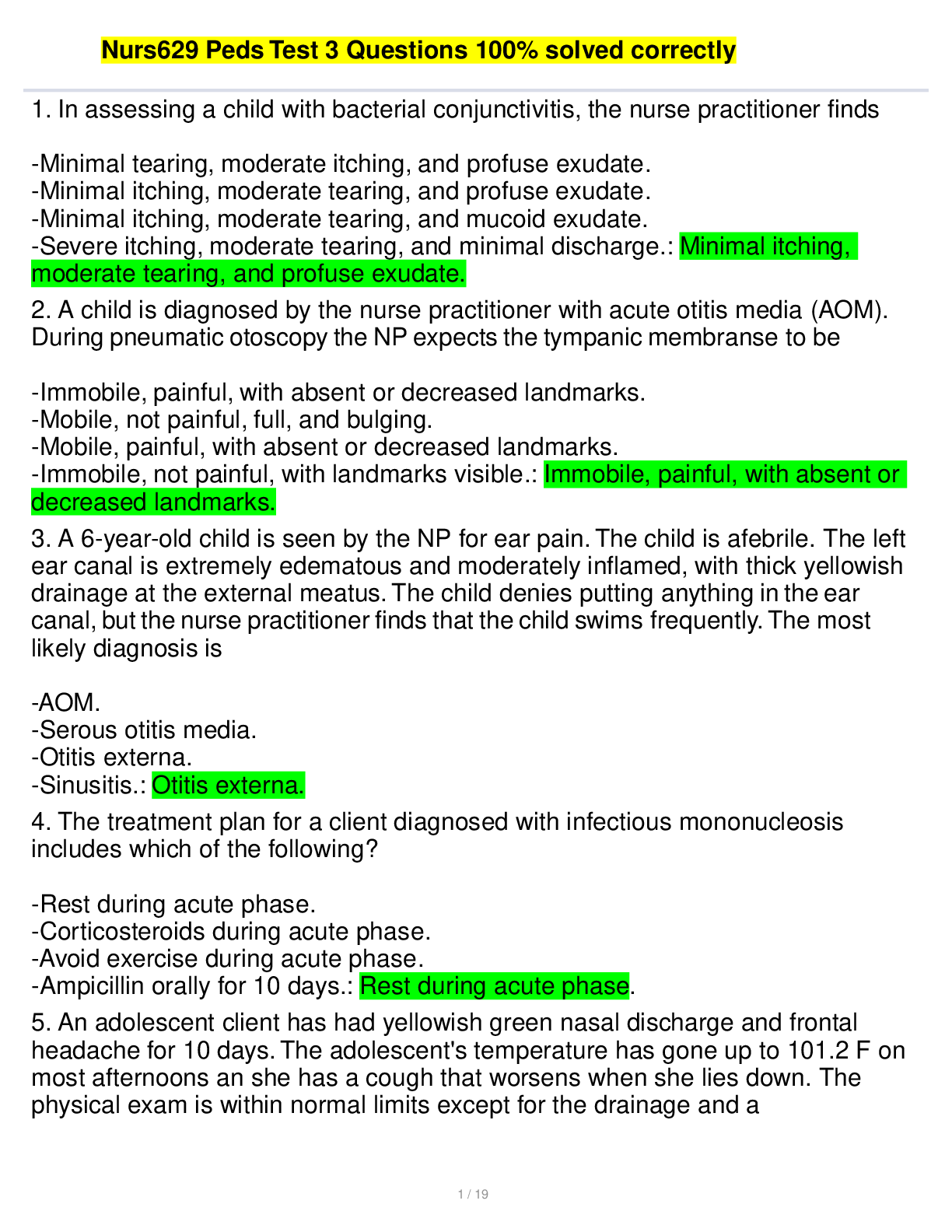*NURSING > EXAM > ABFM ITE 2019 Exam Updated completely 100% solved correctly Grade A+ (with Explanation) 200Q (All)
ABFM ITE 2019 Exam Updated completely 100% solved correctly Grade A+ (with Explanation) 200Q
Document Content and Description Below
ABFM ITE 2019 Exam Updated completely 100% solved correctly Grade A+ (with Explanation) 200Q 1. A 42-year-old female presents for follow-up after being treated for recurrent respiratory problems at a... n urgent care facility. She is feeling a little better after a short course of oral prednisone and use of an albuterol (Proventil, Ventolin) inhaler. She has had a gradual increase in shortness of breath, a chronic cough, and a decrease in her usual activity level over the past year. She has brought a copy of a recent chest radiograph report for your review that describes panlobular basal emphysema. She does not have a history of smoking, secondhand smoke exposure, or occupational exposures. Spirometry in the office reveals an FEV1/FVC ratio of 0.67 with no change after bronchodilator administration. Which one of the following underlying conditions is the most likely cause for this clinical presentation? A) 1-Antitrypsin deficiency B) Bronchiectasis C) Diffuse panbronchiolitis D) Interstitial lung disease E) Left heart failure {{Correct Ans- A Explanation This patient presents with symptoms of chronic obstructive lung disease, and spirometry confirms airflow limitation or obstruction with an FEV1/FVC <0.7. Her age, the lack of tobacco smoke or occupational exposures, and the chest radiograph findings are typical of 1-antitrypsin deficiency. While left heart failure, interstitial lung disease, bronchiectasis, and diffuse panbronchiolitis are all causes of chronic cough, they are not necessarily associated with the development of COPD and these spirometry findings. Furthermore, the radiologic findings in this patient are not consistent with these conditions. Left heart failure would present with pulmonary edema on a chest radiograph and volume restriction on pulmonary function testing. Bronchiectasis would present with bronchial dilation and bronchial wall thickening on a chest radiograph. Interstitial lung disease would present with reticular or increased interstitial markings. Diffuse panbronchiolitis would present with diffuse small centrilobular nodular opacities along with hyperinflation. 2. An otherwise healthy 57-year-old male presents with mild fatigue, decreased libido, and erectile dysfunction. A subsequent evaluation of serum testosterone reveals hypogonadism. Which one of the following would you recommend at this time? A) No further diagnostic testing B) A prolactin level C) A serum iron level and total iron binding capacity D) FSH and LH levels E) Karyotyping {{Correct Ans- D Explanation In men who are diagnosed with hypogonadism with symptoms of testosterone deficiency and unequivocally and consistently low serum testosterone concentrations, further evaluation with FSH and LH levels is advised as the initial workup to distinguish between primary and secondary hypogonadism. If secondary hypogonadism is indicated by low or inappropriately normal FSH and LH levels, prolactin and serum iron levels and measurement of total iron binding capacity are recommended to determine secondary causes of hypogonadism, with possible further evaluation to include other pituitary hormone levels and MRI of the pituitary. If primary hypogonadism is found, karyotyping may be indicated for Klinefelter's syndrome. 3. A 4-year-old female is brought to your office because of a history of constipation over the past several months. Her mother reports that the child has 1-2 bowel movements per week composed of small lumps of hard stool. She strains to have the bowel movements, and they are painful. The child eats normally like her two siblings. Which one of the following would be most effective at this time? A) Daily fiber supplements B) Lactulose C) Magnesium hydroxide (Milk of Magnesia) D) Polyethylene glycol (MiraLAX) E) Senna {{Correct Ans- D Explanation This patient presents with symptoms compatible with functional constipation. Daily use of polyethylene glycol (PEG) solution has been found to be more effective than lactulose, senna, or magnesium hydroxide in head-to-head studies. Evidence does not support the use of fiber supplements in the treatment of functional constipation. No adverse effects were reported with PEG therapy at any dosing regimen. Low-dose regimens of PEG are 0.3 g/kg/day and high-dose regimens are up to 1.0-1.5 g/kg/day. 4. A 30-year-old female presents with a 5-day history of subjective fever and malaise. She does not have a thermometer at home but has felt alternately warm and chilled. She has felt generally unwell and is sleeping more than usual. She has had a decreased appetite but has been drinking fluids without difficulty. She does not have a runny nose, cough, headache, abdominal pain, vomiting, diarrhea, joint pain, rash, or pain with urination. Her medical history includes substance use disorder and she takes buprenorphine/naloxone (Suboxone). She smokes one pack of cigarettes daily, has 0-2 alcoholic drinks daily, and began using intravenous heroin again 1 week ago. An examination reveals a blood pressure of 112/68 mm Hg, a pulse rate of 88 beats/min, a respiratory rate of 16/min, a temperature of 38.9°C (102.0°F), and an oxygen saturation of 95% on room air. The patient appears fatigued and uncomfortable but nontoxic. Her heart has a regular rate and rhythm with no murmur. Her lungs are clear to auscultation bilaterally and her abdomen is soft and nontender. There is no swelling or redness in the extremities and a skin examination reveals no rashes or lesions. Which one of the following would be most important at this point? A) A viral swab B) An antinuclear antibody level C) Blood cultures D) An erythrocyte sedimentation rate E) A chest radiograph {{Correct Ans- C Explanation A patient who uses intravenous drugs and has a fever without a clear source must be evaluated for infectious endocarditis (IE). The first step in this evaluation is to obtain blood cultures. Although this patient might have a less serious condition, it is critical to evaluate for bacteremia in this situation. If the concern for IE is high, blood cultures should be obtained and antibiotics may be started while waiting for results and arranging for urgent echocardiography. IE in people who inject drugs is more likely to be right-sided, specifically involving the tricuspid valve. Right-sided IE is less frequently associated with systemic findings of endocarditis such as Janeway lesions or Roth spots. Patients often do not have a heart murmur. 5. During a newborn examination you note a foot deformity, with the front half of the foot turned inward. Applying gentle pressure to the forefoot while holding the heel steady brings the heel and forefoot into alignment. Which one of the following would you recommend? A) Observation only B) Adjustable shoes C) Serial casting D) Surgical correction {{Correct Ans- A Explanation This patient has flexible metatarsus adductus, the most common congenital foot deformity. Flexible metatarsus adductus usually resolves spontaneously by 1 year of age and does not require treatment. Rigid metatarsus adductus should be treated with serial casting. Using adjustable shoes is an alternative that is less expensive than serial casting for motivated parents with children who are not yet walking. Surgical correction should be reserved for older children who are already walking or for those with persistent symptomatic metatarsus adductus that is resistant to casting. [Show More]
Last updated: 2 years ago
Preview 1 out of 150 pages
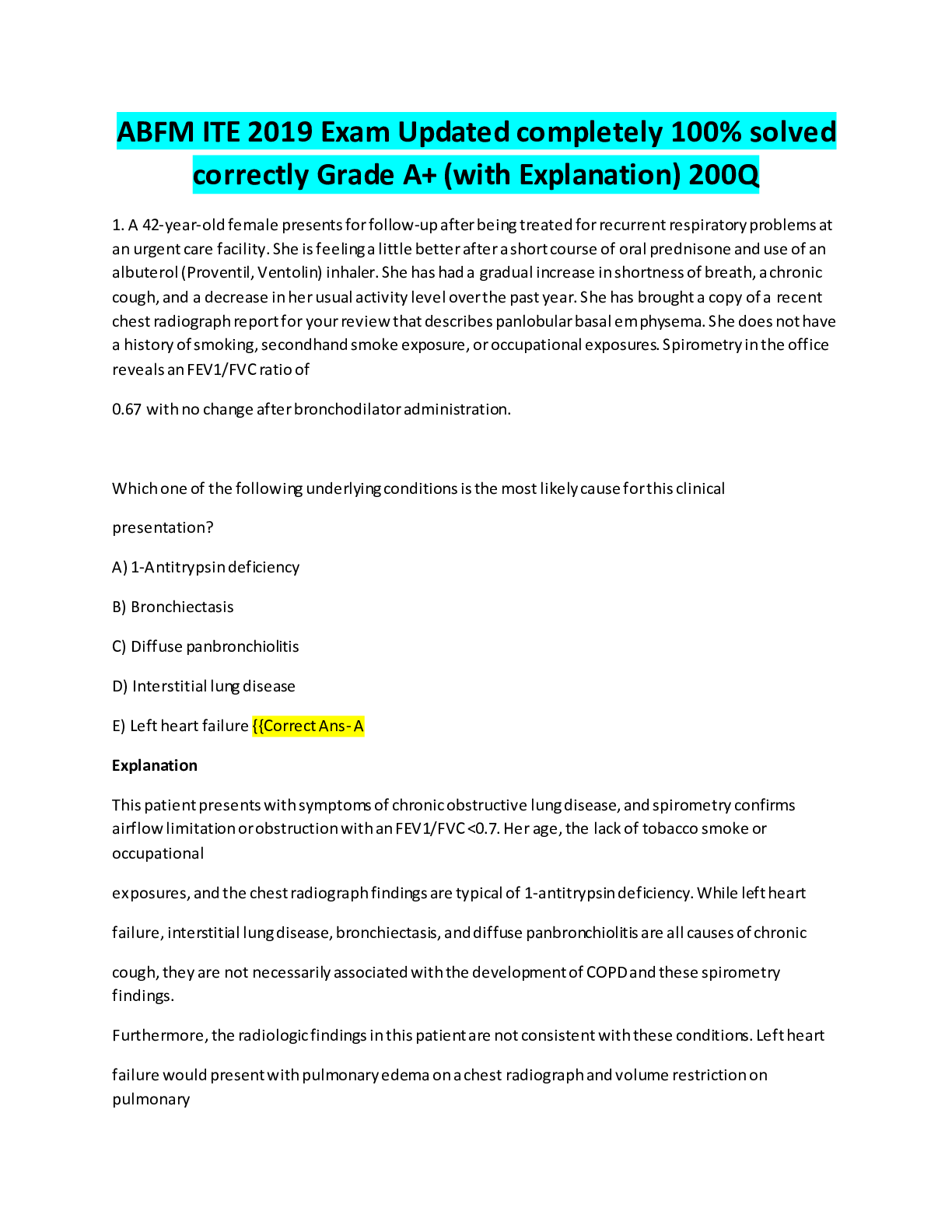
Buy this document to get the full access instantly
Instant Download Access after purchase
Buy NowInstant download
We Accept:

Reviews( 0 )
$6.00
Can't find what you want? Try our AI powered Search
Document information
Connected school, study & course
About the document
Uploaded On
Sep 15, 2022
Number of pages
150
Written in
Additional information
This document has been written for:
Uploaded
Sep 15, 2022
Downloads
0
Views
72

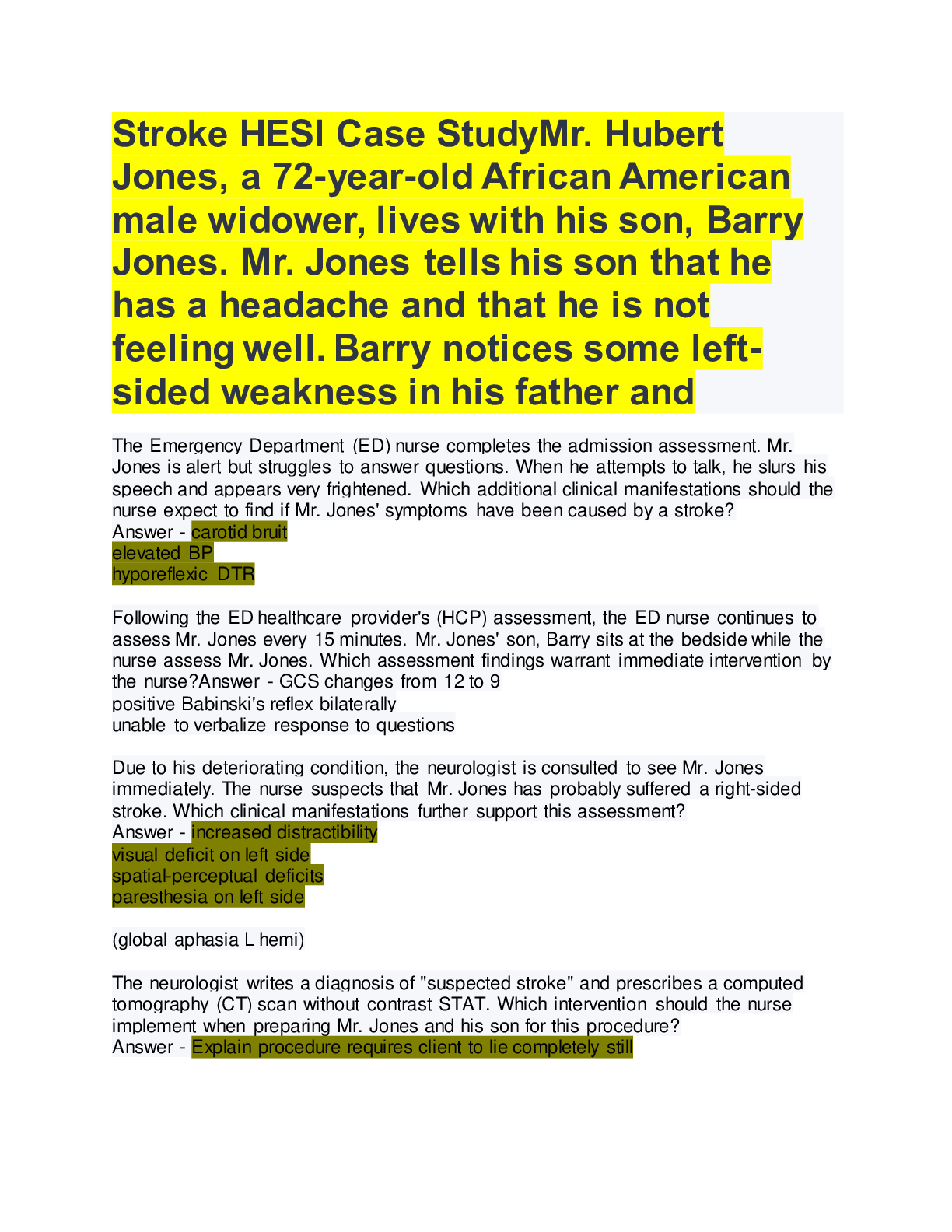
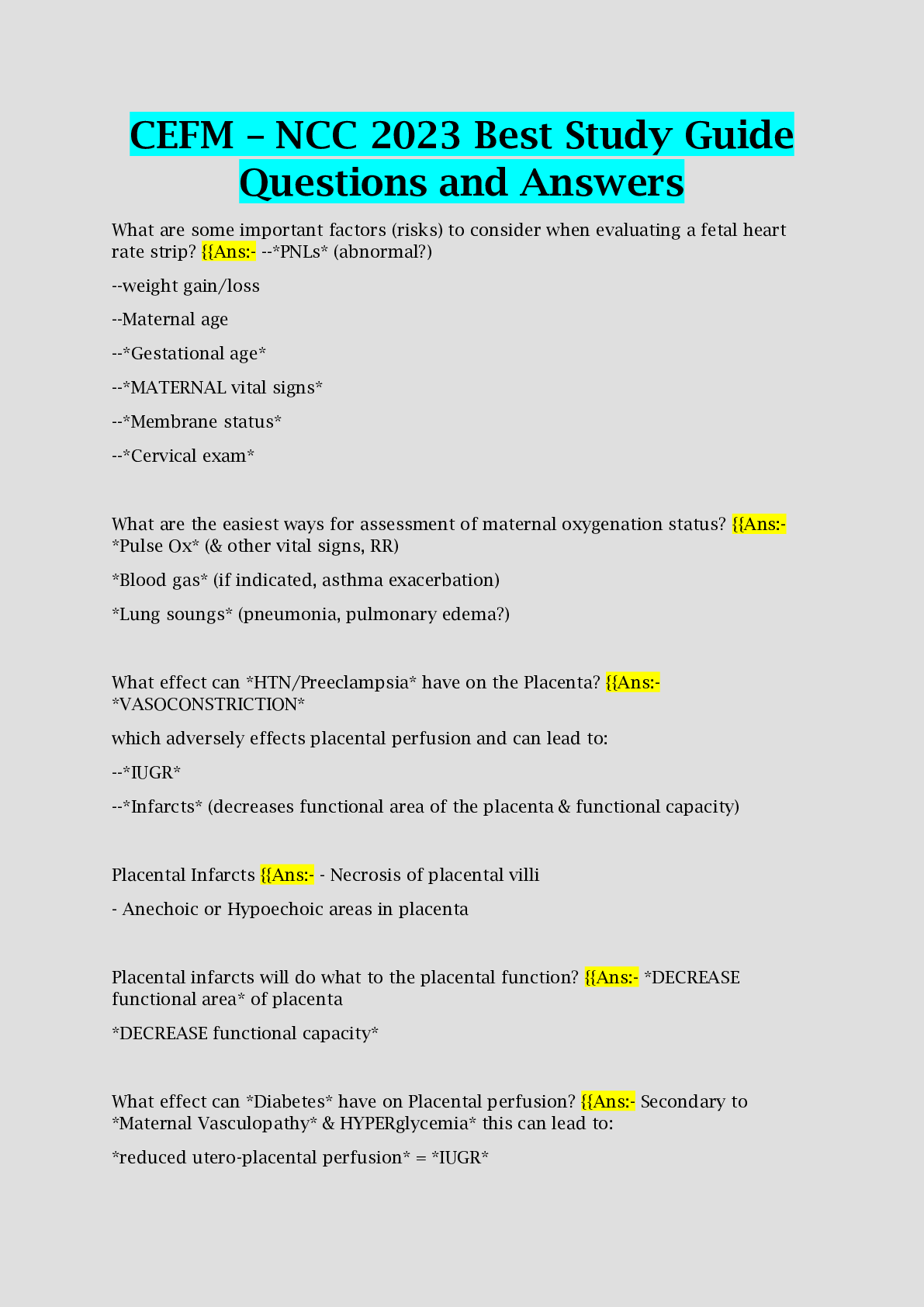
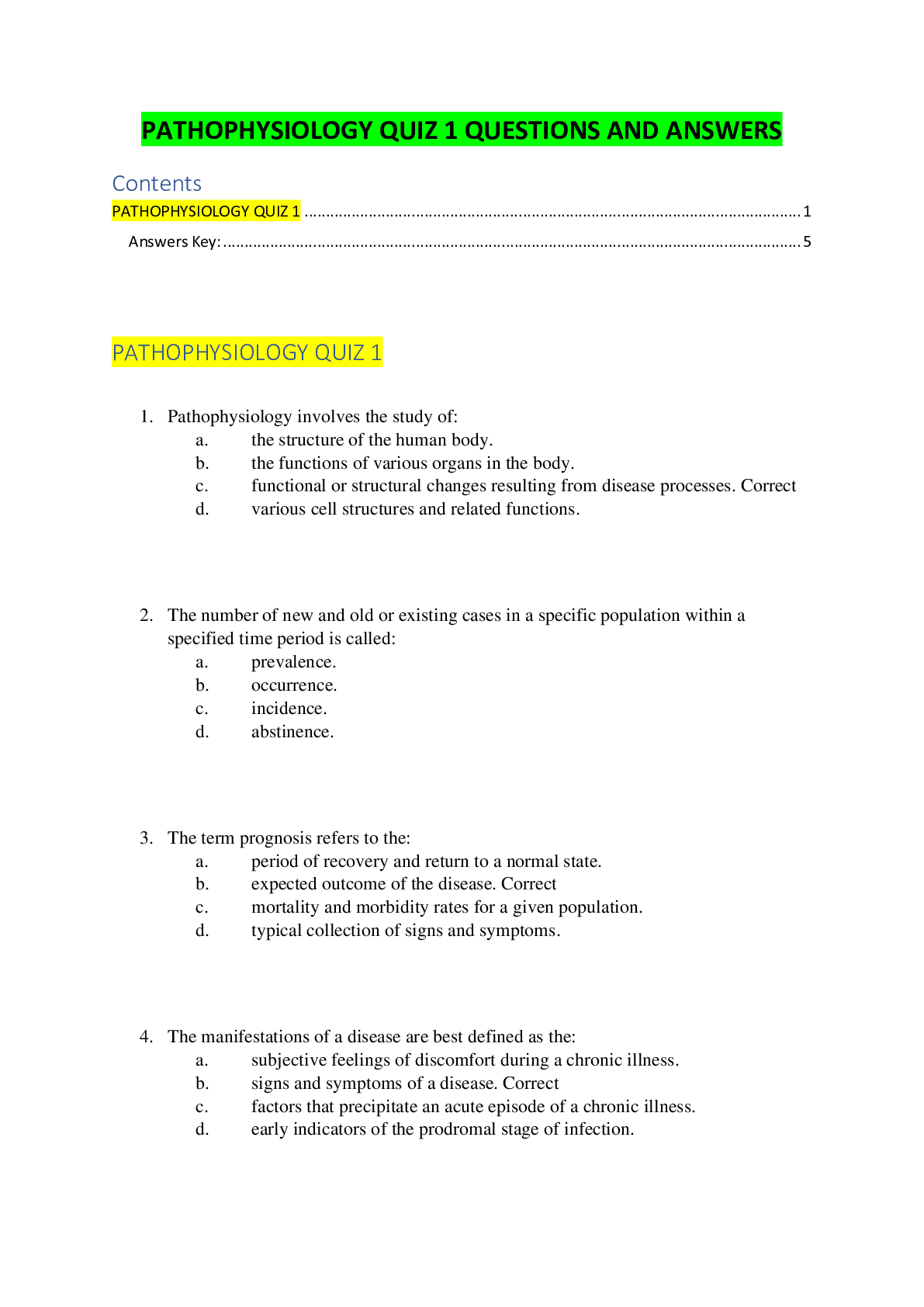
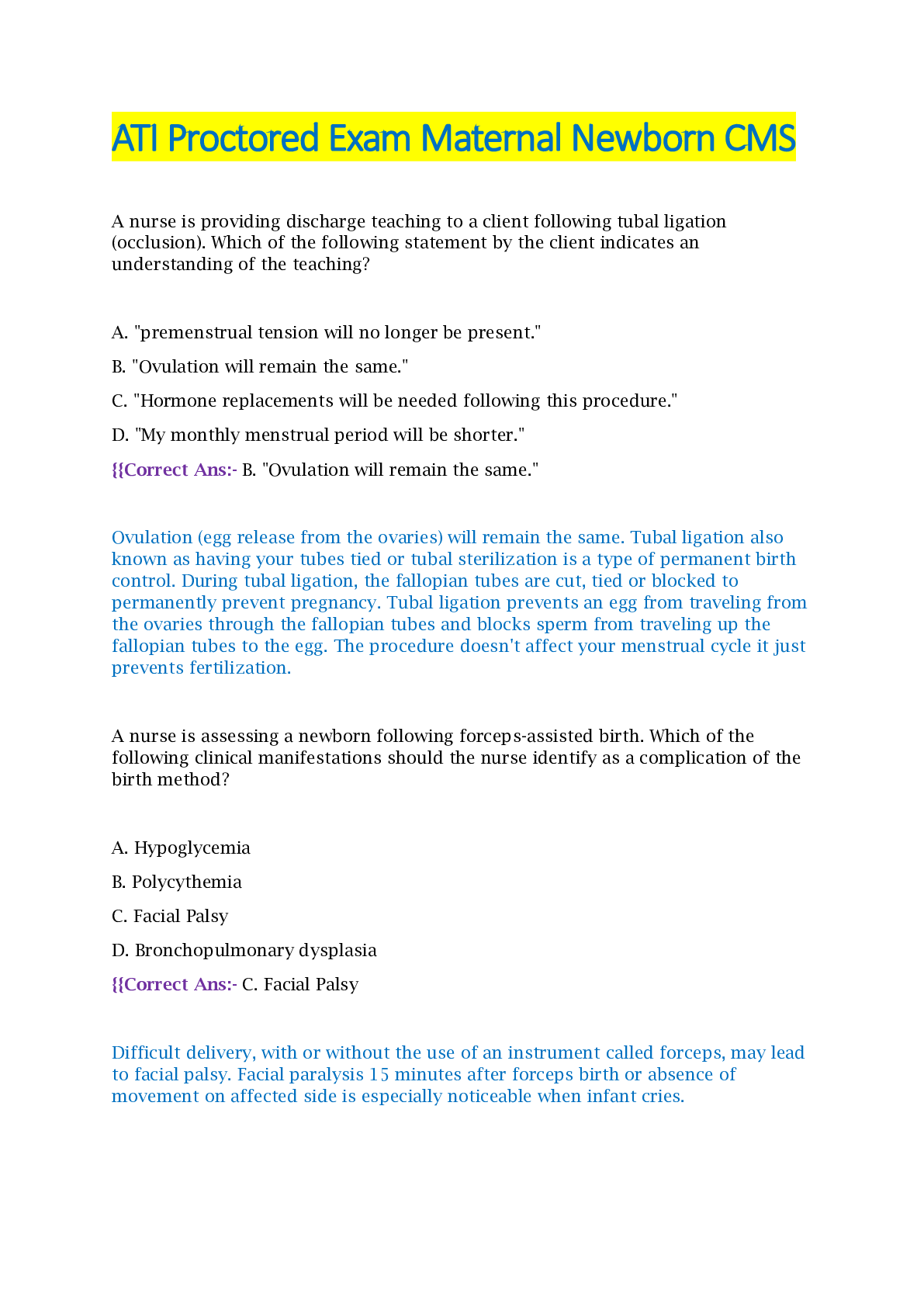
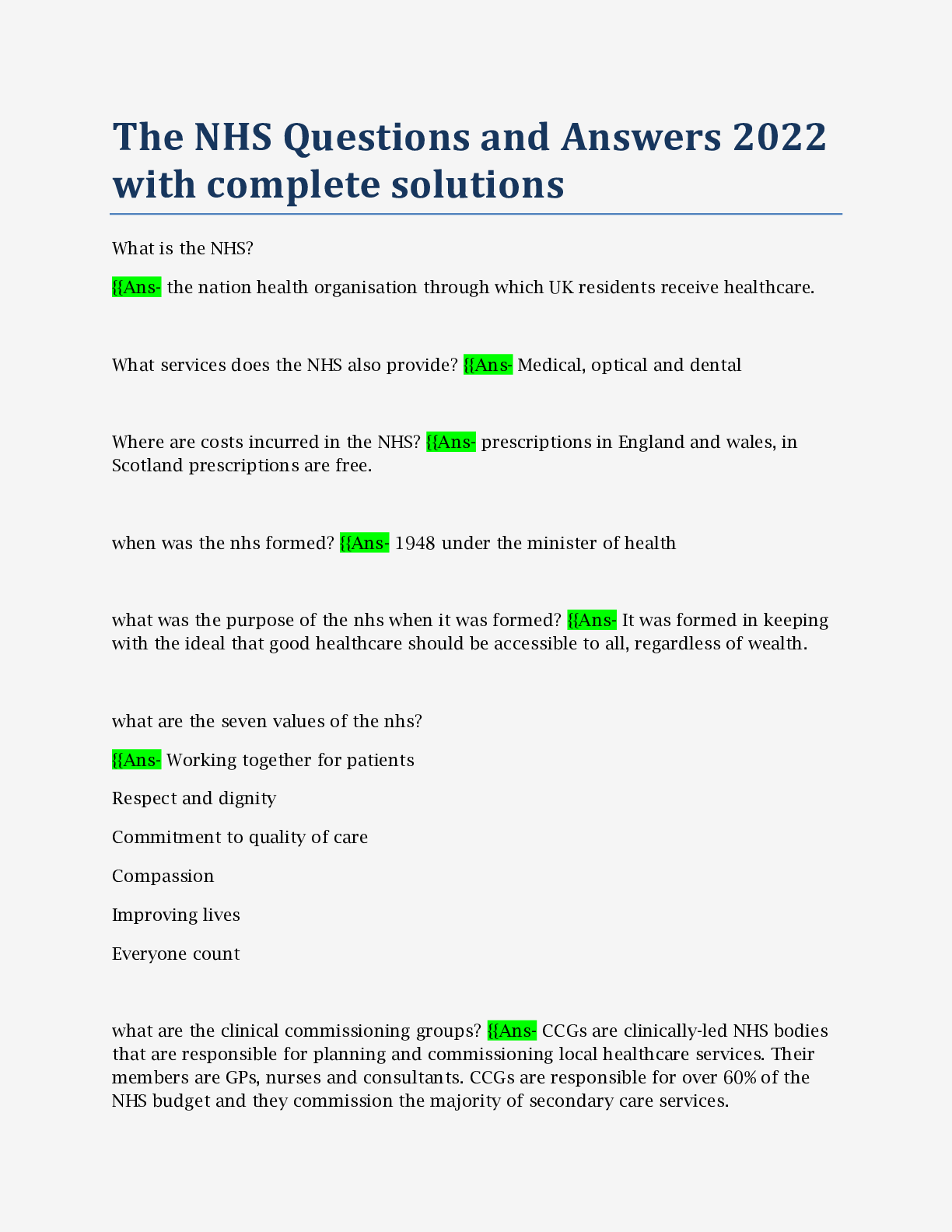
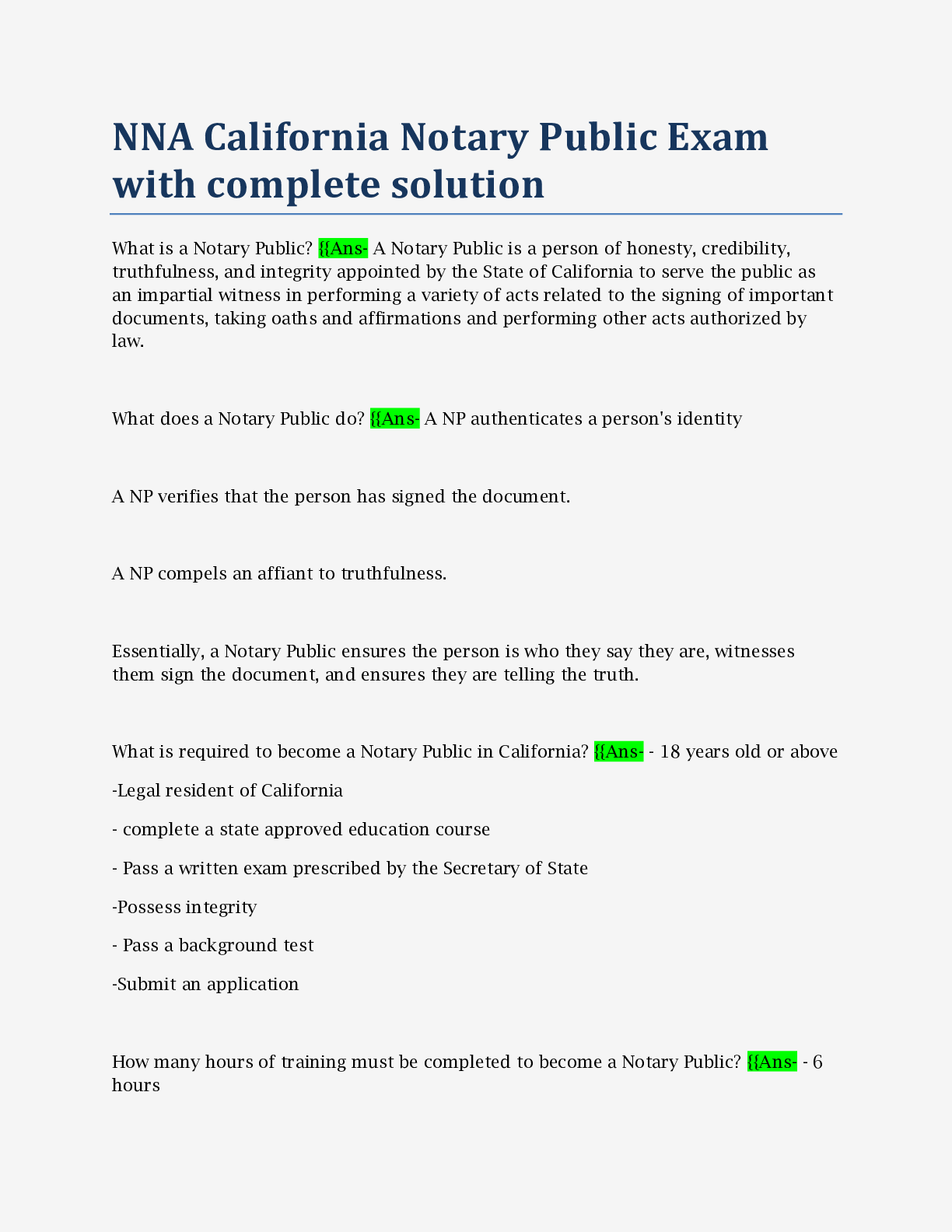

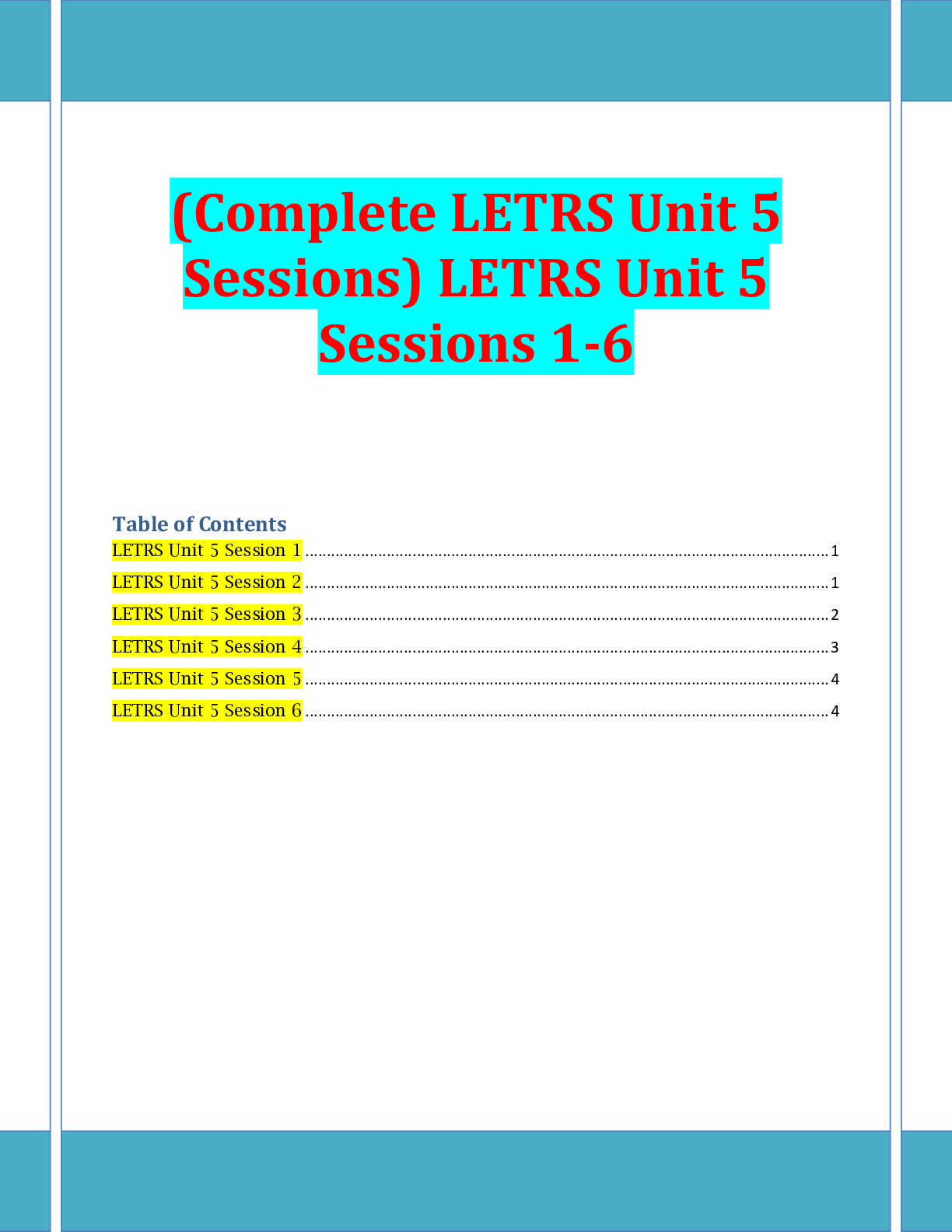
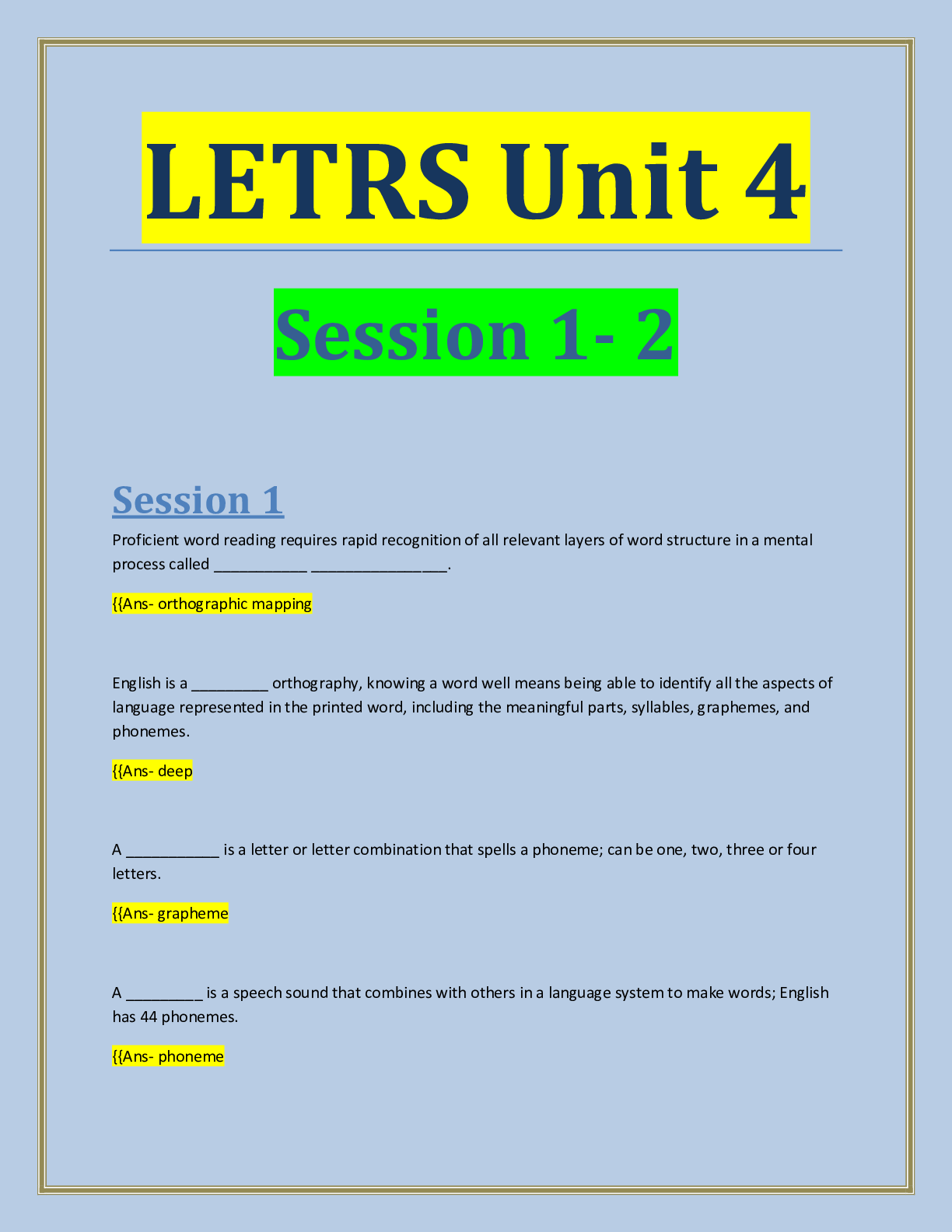
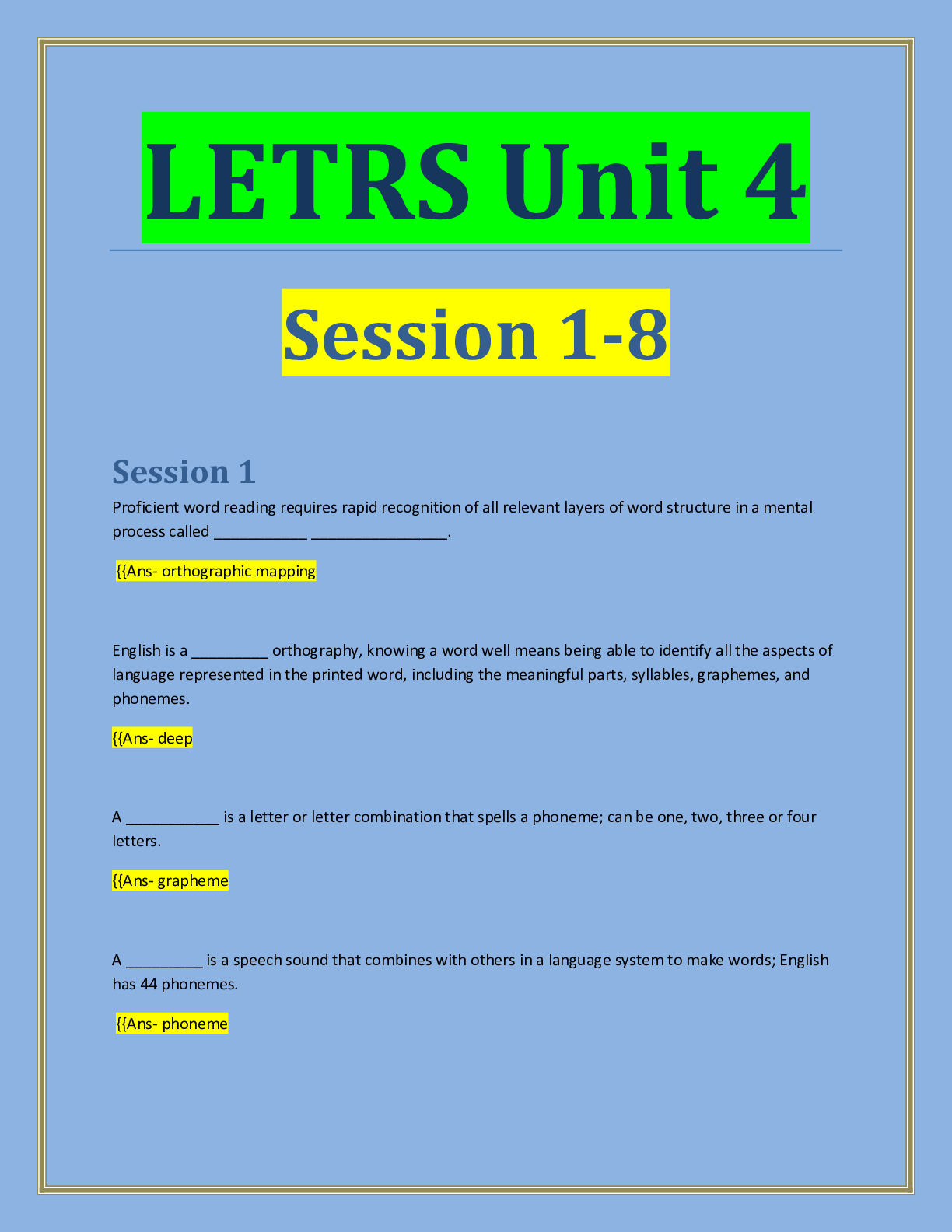

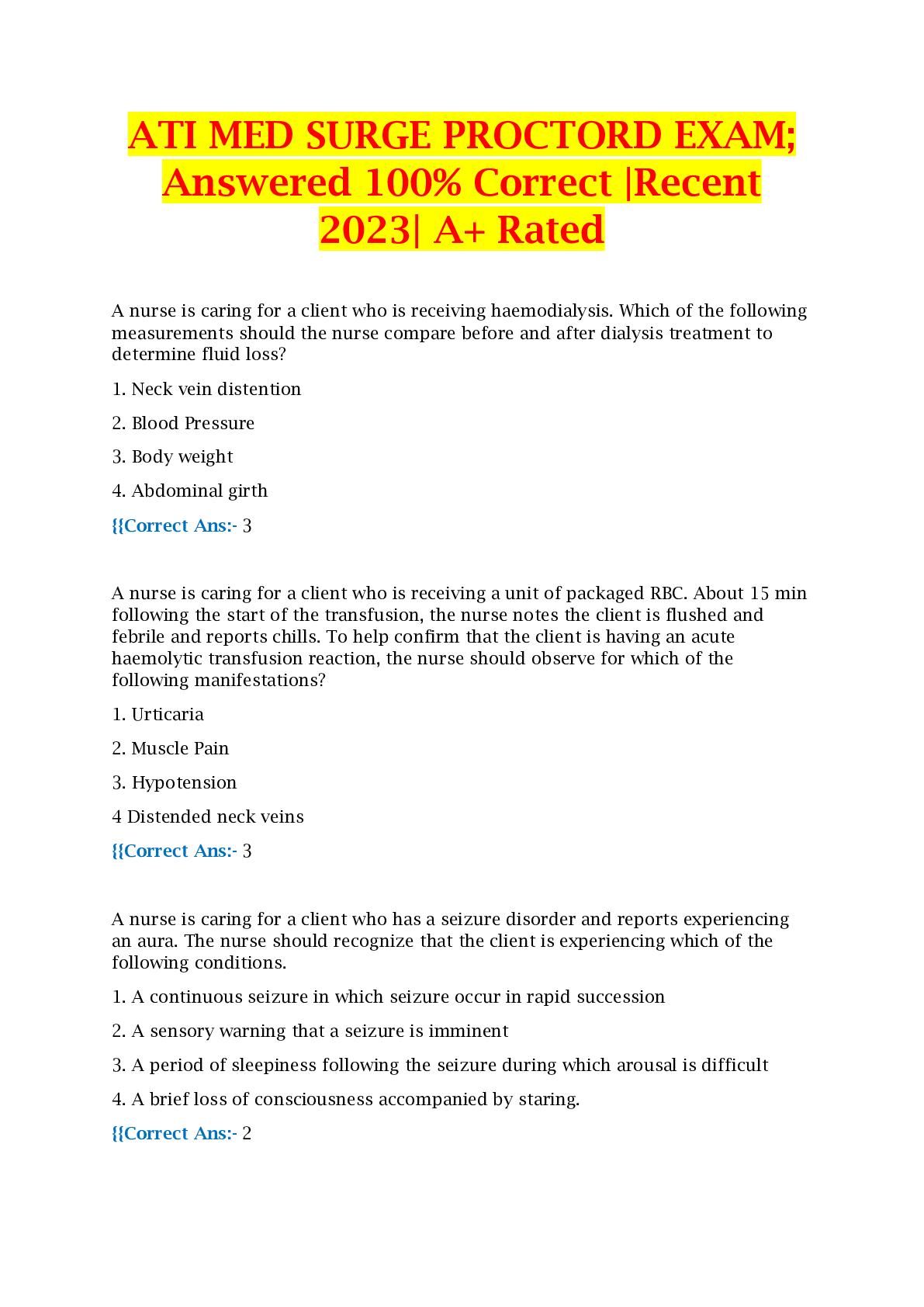
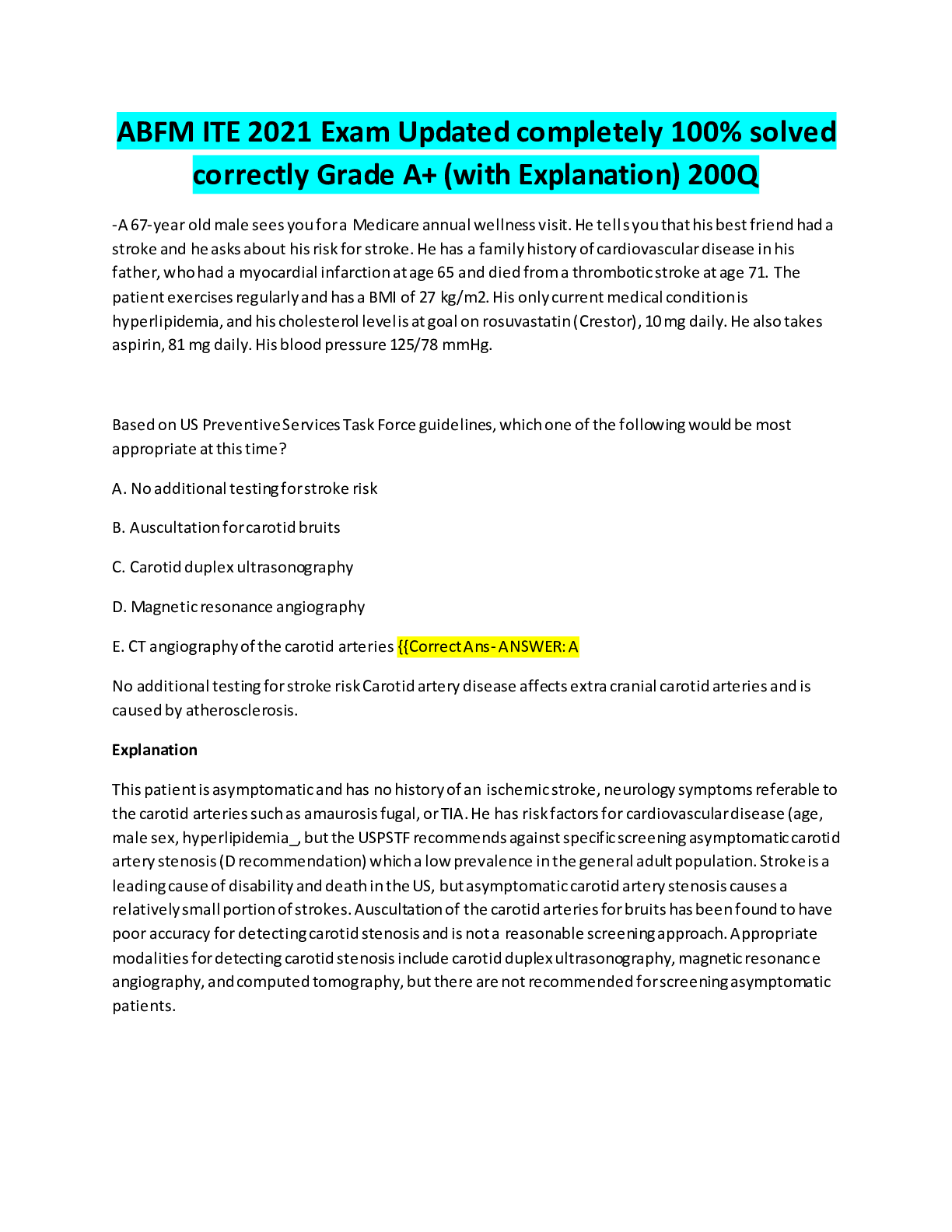
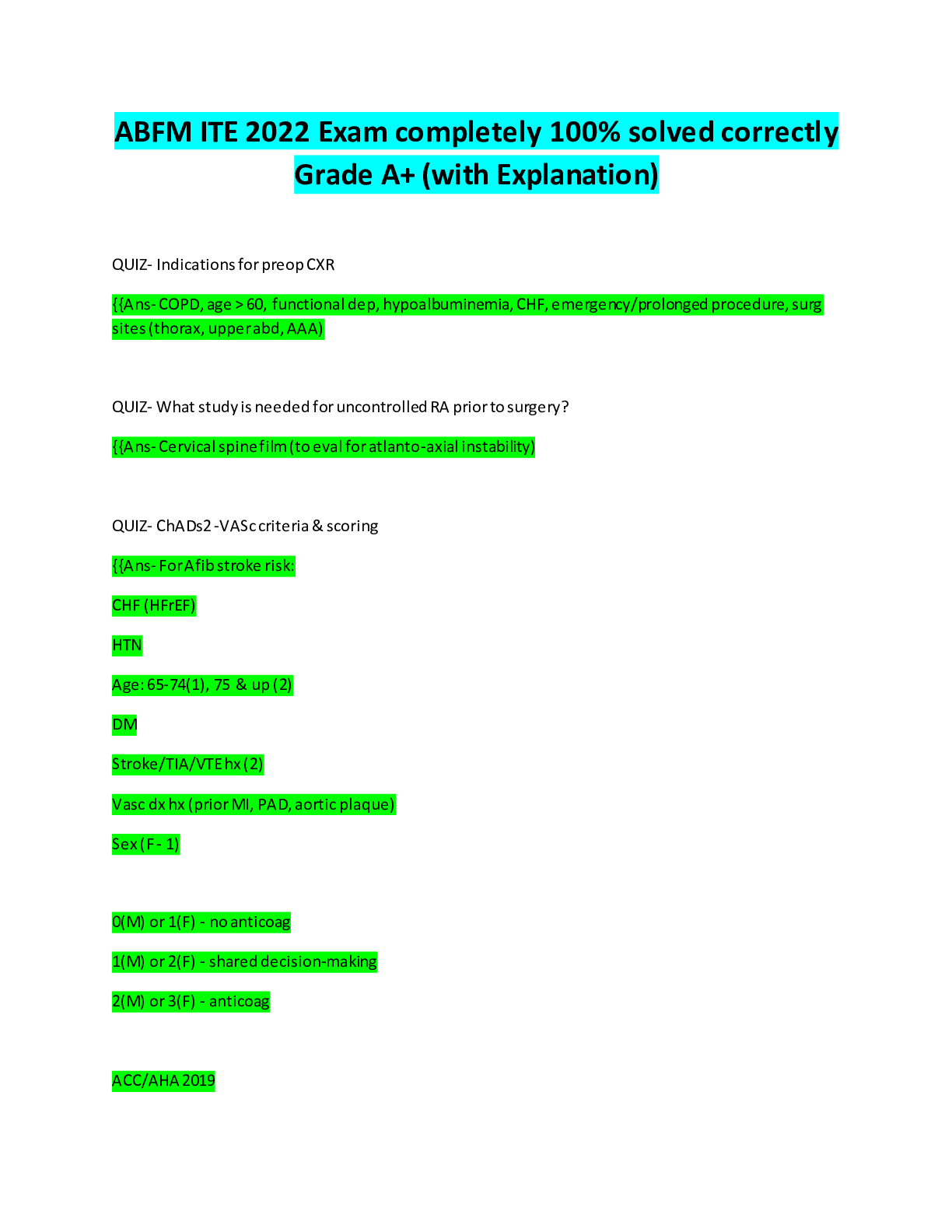
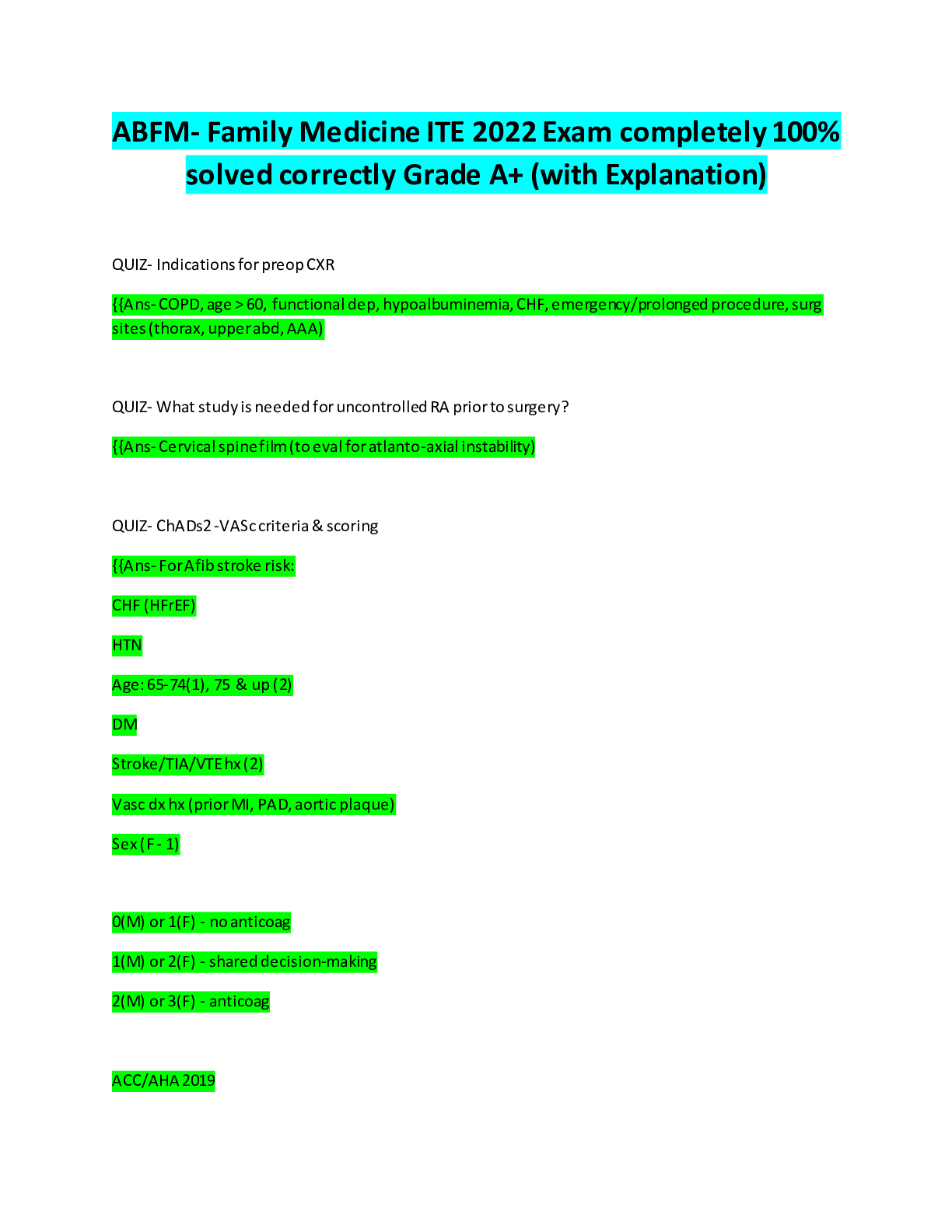
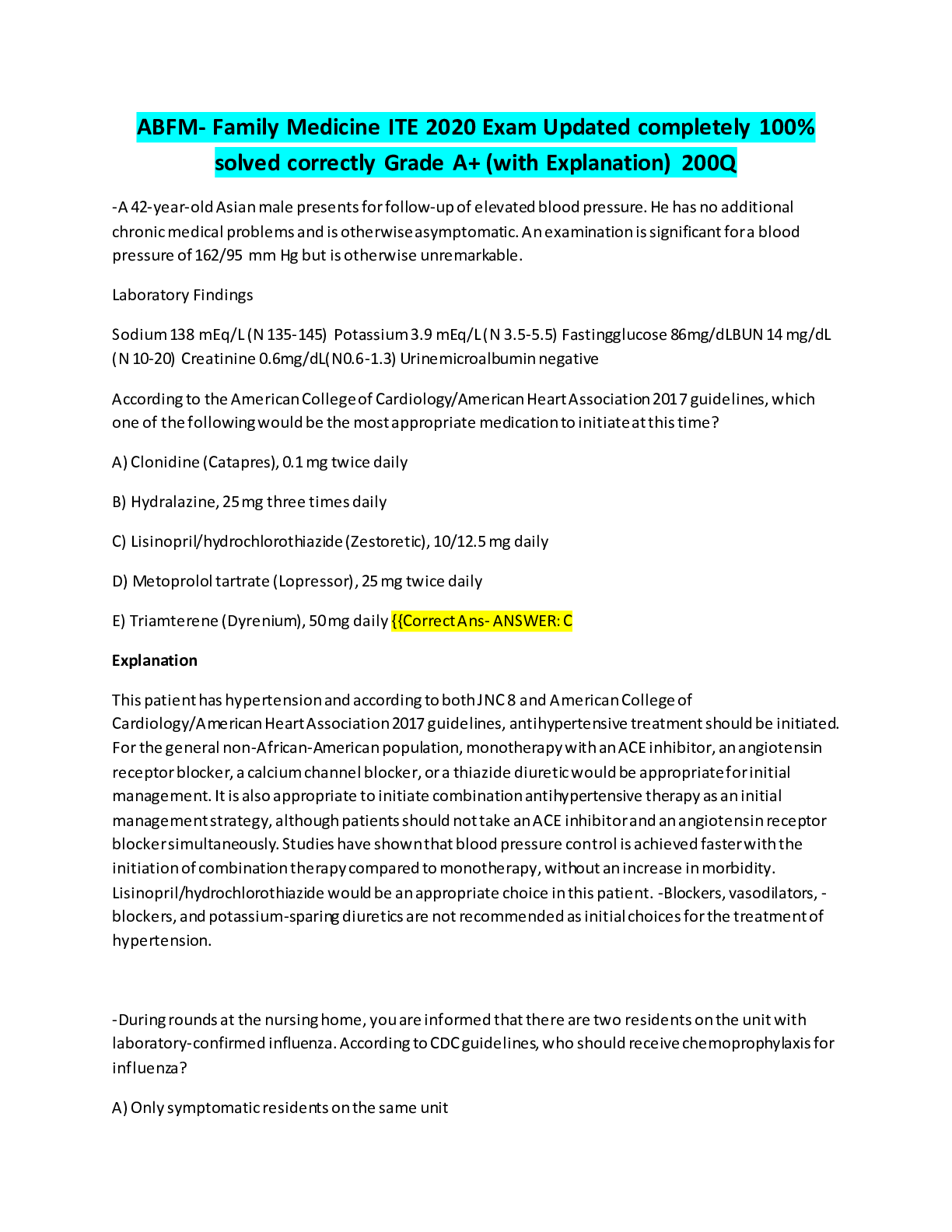
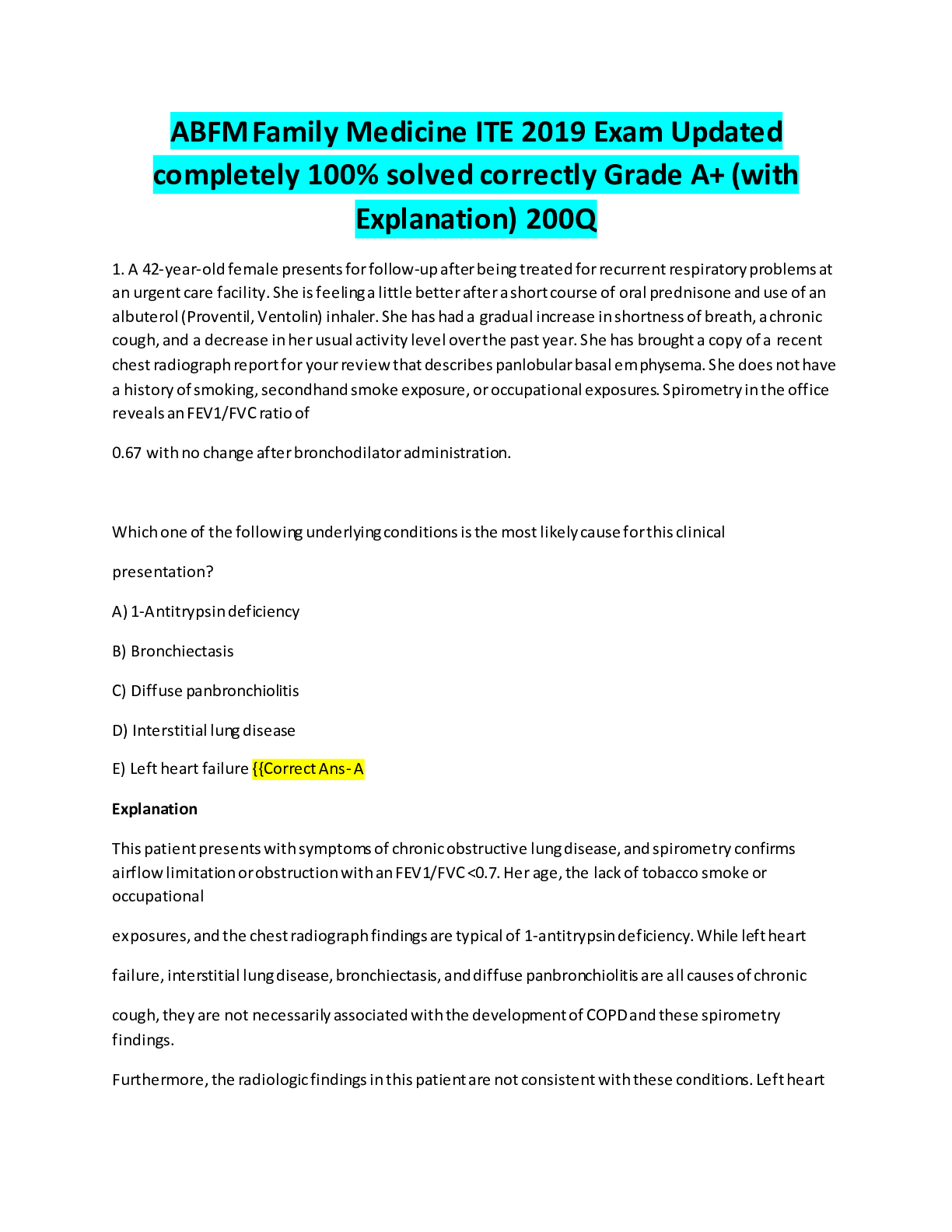
 ITE 2018.png)
